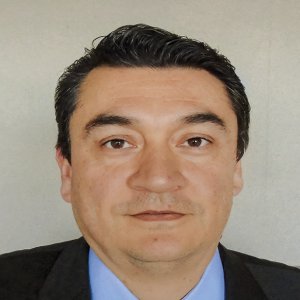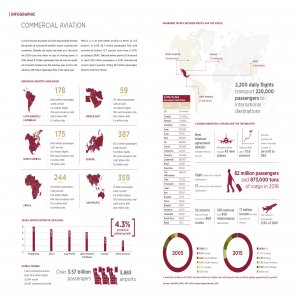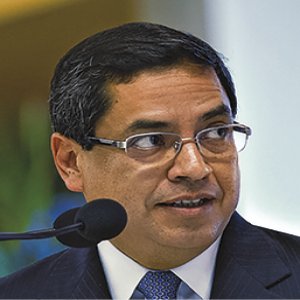Envisioning the Airports of the Future

Envisioning the Airports of the Future

STORY INLINE POST
Q: What differentiates SITA from other IT companies?
AC: SITA belongs to the airline community. This gives us a unique understanding of their business processes and how to improve efficiency. Our goal is to work with different organizations to define industry standards.
EQ: We are passionate about the industry. We work closely with airlines, airports and governments and we are helping them to improve their processes. All our efforts aim to help them be successful and to make passengers happy. What differentiates us is our extensive experience and familiarity with all players in the sector, which permits us to pinpoint their needs and create solutions for them.
UT: SITA has been in Mexico for over 50 years. We possess comprehensive knowledge of the Mexican market.
Q: How do you envision the airport of the future and what role will technology play in its development?
EQ: An airport is all about passenger experience. SITA’s goal is to make the passenger’s trip as pleasant as possible, which involves a significant amount of technology and services. For passengers, the check-in process, baggage documentation and security checks are the most stressful. To make their journey more straightforward we have created automated services to eliminate the long periods of time spent standing. We have innovated in self-service technology for many years and are now incorporating kiosks for automated immigration, check-in and luggage drop.
There are many steps that travelers never see, such as managing many different processes simultaneously, including flight operations, catering, maintenance and clearing. This area, called airport management technologies, ensures flights take off and land on time. A new area involves the personalized services that airports provide to passengers. Many people want to be in control of their trip using mobile technology so we inform passengers of the status of their flight and their luggage’s location. These perks improve the passenger experience.
AC: Airport technology efficiency focuses on how passengers and luggage are managed. Using technology at the core of these processes can generate revenue for airports and reduce costs for passengers, which can in turn make airports more competitive. Since NAICM aims to become a hub for the region, it could greatly benefit from incorporating this technology to become efficient and competitive.
Q: In which areas could SITA support NAICM’s construction?
EQ: NAICM will need to develop a comprehensive road map for its construction to become a gateway to Mexico City. We already provide services for AICM, the Cancun International Airport (AIC) and all airlines operating in Mexico so we are fully informed regarding the sector’s needs. We are preparing to participate in the airport’s technology bids because we want to bring the same improved technologies to NAICM
AC: Technology is often installed after the construction of an airport but it should be incorporated much earlier in the process. The earlier technology is incorporated into the design the better for the airport’s long-term prospects. Having a single integrated program managing all technological aspects of construction from the start is important. Internally, we have prepared strategies to support NAICM’s construction and our team is excited to be able to participate in the tenders of this project. Airports last for decades so it is necessary to incorporate sufficient flexibility into their design to adapt to future needs.
Q: What impact will NAICM have on its neighbors and how could SITA support a streamlined incorporation of technology in the area?
AC: Creating an Aerotropolis around the airport will increase commercial revenue both for the airport and the surrounding area, provided it caters to users’ needs. But technology changes each year so our challenge is to develop a product for the area surrounding NAICM that can sustain the evolution of technology throughout its lifetime and still be modern when the processes are operational in 2020.
EQ: Since the airport will be operational in three years, SITA is thinking ahead. Long ago, we anticipated some measures that are now essential in a modern airport, such as the kiosks we installed for automated registration. Next steps will include the introduction of technology aimed at tracking luggage and automated passenger bag drops. Another area we want to improve is documentation. Passengers have to carry an ID and boarding pass but we are working with biometrics and facial recognition to eliminate that. A fully automated airport would allow passengers to check in and drop their luggage by themselves and not worry about carrying personal documents.
Q: Which airports are incorporating this end-to-end service and how do you foresee its incorporation into NAICM?
EQ: We have implemented end-to-end services in airports in Australia and Singapore. We believe that NAICM will need to incorporate similarly advanced technology into many different areas and now is the perfect time to develop that.
AC: NAICM’s team is incorporating recommendations from industry experts and working with the International Air Transport Association (IATA) to get input from airlines on improving passenger processing. SITA works with all Mexican airlines, mapping their needs within this collaborative environment to ensure we implement the right processes and systems. We are also working with Jet Blue and Miami International Airport to implement biometrics technology. Its installation requires a collaborative effort between airports, airlines and government entities.
For a long time, IATA has been closely advising airports about the implementation of processes and technology and SITA has held workshops with airlines for the last three years, preparing them for the introduction of technologies like self-tagging facilities. IATA recently passed resolution 753, which motivates airlines to maintain an accurate inventory of luggage and track reception and delivery for the comfort or passengers. Airlines had communicated these requirements to the government to ensure the implementation of these standards and requirements.























